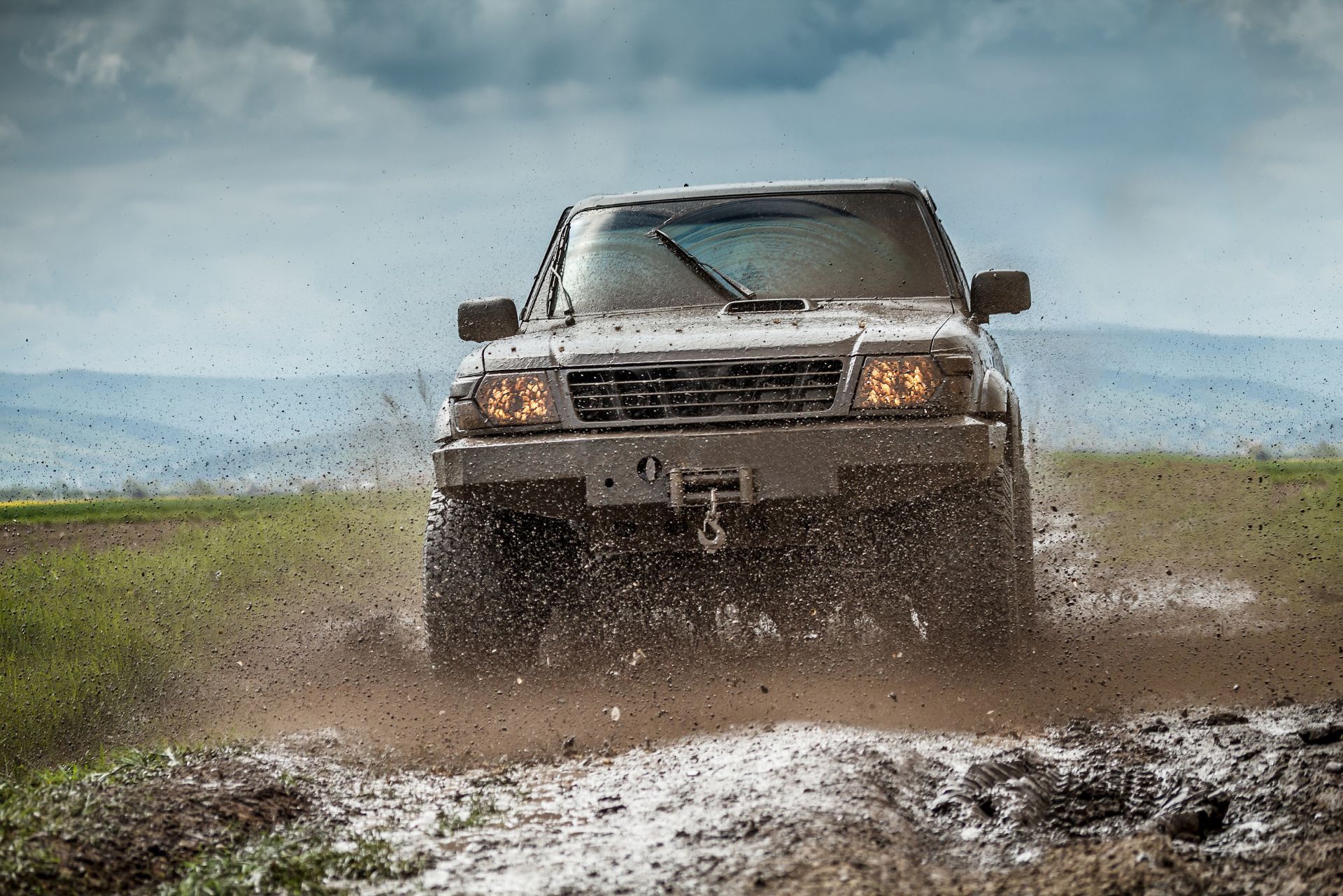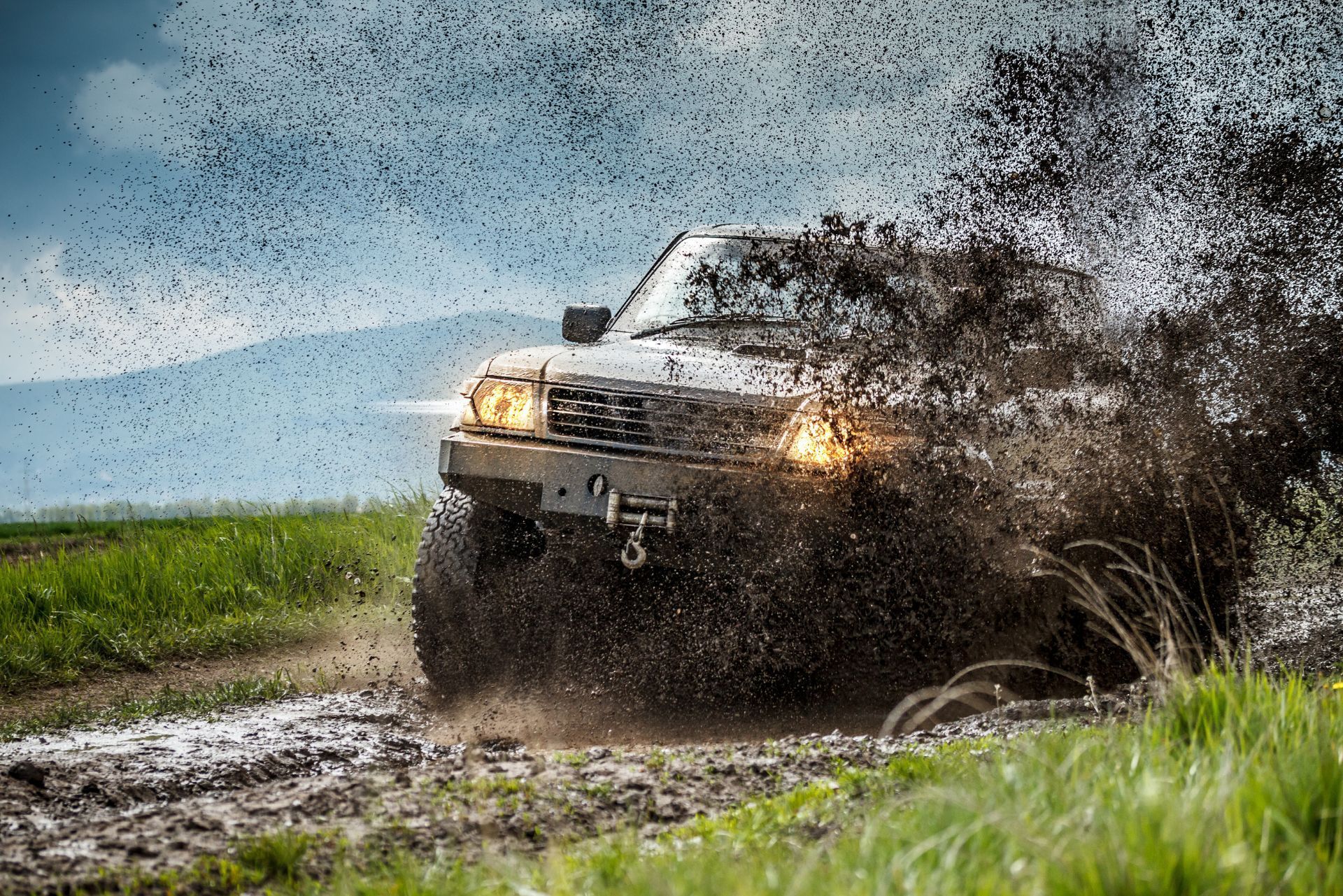Top 3 Recommended Policies

By: David Graves
Licensed Personal Insurance Specialist
425-320-4280
Washington’s Pacific Northwest landscape is a playground for riders who love quads, dirt bikes, side-by-sides, and snowmobiles. From the dusty gullies of the Yakima River Canyon to the mist-covered pine trails near Mount Baker, thousands of enthusiasts venture off the pavement every weekend. With that freedom, however, comes real financial and legal exposure. A single accident can leave a rider liable for medical bills, trail repairs, and replacement equipment that easily run into five-figure territory.
Off-road vehicle insurance closes that gap. While Washington law does not demand the same level of coverage that’s required for cars and trucks, trail managers, lenders, and organized events often impose insurance rules of their own. Understanding when coverage is compulsory, which protections matter most, and how premiums are calculated can help every rider keep both wallet and adventure intact. The following guide breaks down the essentials in plain language, backed by current data and everyday examples.
Off-Road Riding in Washington: Scope and Popularity
According to the latest Washington State Recreation and Conservation Office survey, off-highway vehicle (OHV) use grew by roughly 18 percent between 2019 and 2023. Today, more than 330,000 registered ORVs share 3,600 miles of designated routes statewide. The surge is fueled by affordable entry-level dirt bikes, remote-work flexibility, and high-profile social media channels showcasing rugged local scenery. Snohomish, Grant, and Spokane counties reported the sharpest registration increases, but even coastal counties now maintain small sand-dune riding zones.
Rider demographics are changing as well. The same survey found that 29 percent of new ORV owners are women and that nearly half are families with children under 16. This broader mix has encouraged both public land managers and private ranches to develop beginner-friendly loops alongside expert single-track routes. While the growth is exciting, a higher volume of machines on narrow trails inevitably raises the probability of collision, rollover, or bystander injury—making sound insurance planning even more critical.
In addition to the increase in participation, the types of vehicles being used are also diversifying. While traditional dirt bikes remain popular, there has been a noticeable rise in the use of side-by-sides and ATVs, which offer a different experience and can accommodate more riders. This shift has led to the creation of multi-use trails that cater to various vehicle types, allowing families to enjoy the outdoors together, regardless of their preferred mode of transport. Furthermore, local businesses are capitalizing on this trend by offering rentals and guided tours, which not only enhance the riding experience but also contribute to the local economy.
As the popularity of off-road riding continues to soar, so does the emphasis on responsible riding practices and environmental stewardship. Organizations and clubs are increasingly advocating for "Tread Lightly!" principles, which encourage riders to minimize their impact on the land and respect wildlife habitats. Educational programs aimed at new riders are becoming more prevalent, focusing on safety, trail etiquette, and the importance of staying on designated paths. These initiatives are crucial in ensuring that the natural beauty of Washington's landscapes remains intact for future generations of off-road enthusiasts.

Do You Legally Need Off-Road Vehicle Insurance in Washington?
Unlike automobiles, ORVs operated exclusively on non-public roads are not subject to Washington’s mandatory auto-liability statute (RCW 46.30). That said, two circumstances convert “optional” coverage into a practical requirement. First, any rider who intends to cross a public roadway must carry at least the state’s 25/50/10 auto-liability limits—$25,000 bodily injury per person, $50,000 per accident, and $10,000 property damage. Second, the Washington Department of Natural Resources (DNR) and the U.S. Forest Service often require proof of insurance when issuing special-use permits for large events such as poker runs or charity races.
In addition, most power-sports lenders mandate comprehensive and collision insurance until a loan is paid in full. Several popular trailheads in the Capitol State Forest and Ahtanum State Forest have also posted signs indicating that the landowner “recommends” liability coverage. Skipping insurance in those settings does not carry a statutory fine, but a rider found at fault after an accident can be sued personally for damages. The path of least risk, therefore, leans toward maintaining at least basic liability and medical coverage year-round.
Core Coverage Options Explained
Policies are modular. Riders can combine several protections to suit budget, terrain, and personal tolerance for risk. The sections below outline the most common building blocks.
Liability Coverage
Liability pays when a rider is legally responsible for injuring another person or damaging someone else’s property. A tree strike that drops a limb on a neighboring tent or a throttle mistake that sends a quad into a parked truck can trigger claims. Because medical costs can spiral, many Washington brokers now recommend at least $100,000/$300,000 limits, which add as little as $4–$6 per month over the state minimums.
Collision Coverage
Collision reimburses repair or replacement of the insured machine after contact with another vehicle, a stump, a boulder, or any similar obstacle. Insurers value an ORV using actual cash value, so depreciation matters. A two-year-old side-by-side that originally cost $24,000 might be valued at $18,000 when a claim hits. Choosing a higher deductible—$500 or $1,000—is the simplest way to tame the premium while still protecting against a catastrophic loss.
Comprehensive Coverage
Comprehensive handles non-collision risks such as theft, vandalism, fire, or damage from falling objects. Washington’s higher-than-average precipitation can swell rivers and loosen hillside boulders, both common causes of parked-vehicle damage. Crime statistics from the National Insurance Crime Bureau show that power-sports thefts spike in King and Pierce counties every July and August, so owners who store machines on open trailers may find comprehensive coverage particularly valuable.
Uninsured/Underinsured Motorist (UM/UIM)
Studies estimate that roughly 16 percent of Washington ORV riders carry no liability insurance. UM/UIM steps in if an at-fault rider falls into that uninsured slice or if the liability limits they do carry run out. The coverage pays for the policyholder’s medical bills and property damage up to the purchased limits—often available from $25,000 to $250,000. For riders who frequent crowded multi-use trailheads, UM/UIM represents low-cost peace of mind.
Medical Payments (MedPay) or Personal Injury Protection (PIP)
MedPay and PIP cover immediate medical expenses for the rider and passenger, regardless of fault. Typical limits range from $2,500 to $25,000 and pay for ambulance services, X-rays, and out-of-pocket copays. Because many individual and employer health plans exclude motorsports injuries, these coverages prevent unwelcome surprises when the hospital bill arrives. Families who ride together often appreciate PIP’s broader reach, which can even cover lost wages during recovery.
Accessory and Custom Parts Coverage
Factory warranties and standard policies rarely account for thousands of dollars in winches, GPS units, aftermarket tracks, or performance exhaust systems. Accessory coverage fills that gap. Insurers typically include a small base amount—$1,000 or $3,000—then allow riders to buy higher limits in $1,000 increments. Keeping receipts and photographs of add-ons speeds up any future claims process and supports full reimbursement.
Factors That Shape Your Premium
Every insurer uses proprietary formulas, yet five variables dominate pricing outcomes in Washington.
Vehicle Class and Engine Size
High-horsepower side-by-sides and 1000cc enduros are statistically involved in more severe accidents than small trail quads or 125cc dirt bikes. As a result, a brand-new 172-horsepower turbo SxS can cost triple the annual premium of a youth ATV, even with identical coverage limits. Where possible, quoting before buying helps riders budget accurately.
Rider Profile and Experience
Age, license status, and prior training courses matter. Operators under 25 or those with less than three years of riding history see surcharges of 15–25 percent. Completing the Washington ATV Safety Course or the MSF DirtBike School can trigger discounts that offset a portion of that youthful-operator adjustment.
Intended Use and Terrain
Polices ask whether the machine is used for racing, rock crawling, snow travel, or casual trail riding. Competitive use usually pushes owners toward specialized motorsports carriers because mainstream insurers exclude organized racing. Mileage estimates also come into play; a machine trailered ten weekends per year costs less to insure than a daily ranch workhorse.
Storage and Security Measures
Lockable garages, encrypted ignition switches, and GPS trackers reduce theft risk. Insurers reward those safeguards with premium credits of up to 10 percent. Conversely, machines stored on open trailers in apartment parking lots may incur surcharges, especially in urban ZIP codes where theft rates trend higher.
Claims History and Credit Score
Prior at-fault accidents, even on the road in a passenger car, signal elevated risk. Washington allows insurance companies to use credit-based insurance scoring as well, citing studies that correlate financial responsibility with claim frequency. Maintaining a clean driving record and monitoring credit health are therefore two indirect but effective ways to keep ORV insurance affordable.
Registration, Decals, and Insurance: How They Interact
Washington requires ORVs to display an off-road tab if the vehicle will be operated on public lands. The one-time registration fee is $18, after which owners renew annually for $30. The registration process does not verify insurance, yet the decal can be suspended by DOL if a court awards damages stemming from an uninsured ORV crash. Riders planning occasional on-road travel may instead purchase a dual registration that includes a street legal license plate, in which case proof of minimum auto-liability is mandatory during the plate application.
Visiting riders from out of state must carry either their home-state ORV registration or a Washington Temporary ORV Use Permit. While the permit office does not ask for insurance documents, many rangers conducting trailhead safety checks will include an insurance question. Producing a current policy card speeds the process and avoids potential citations under disorderly conduct or public endangerment statutes if an incident has already occurred.
Typical Costs and Smart Ways to Save
Across major carriers, a liability-only policy for a 450cc dirt bike in Spokane averages $91 per year. Comprehensive and collision coverage raise the figure to roughly $210, assuming a $500 deductible and no prior claims. Side-by-sides run higher; full coverage on a recent-model two-seat UTV in King County commonly lands between $360 and $540 annually. Snowmobiles fall in the middle, largely because seasonal usage limits exposure to four or five months.
Bundling an ORV with an existing auto or homeowners policy shaves 10–20 percent off premiums at most Washington insurers. Increasing deductibles from $250 to $750 saves another 8–12 percent. Accessory coverage can be dialed back each year as the machine ages and aftermarket parts depreciate, delivering incremental savings without sacrificing liability protection.
Finally, staying claim-free yields long-term rewards. Insurers typically apply a 20 percent penalty after the first at-fault ORV incident and keep that surcharge in place for three policy periods. Riding defensively, wearing high-visibility gear, and avoiding peak congestion hours on popular routes such as the Walker Valley ORV Area reduce the chance of an accident and preserve those valuable claim-free discounts.
Safety habits influence not only personal well-being but also the actuarial tables that set premiums. Washington’s Department of Fish & Wildlife recorded 117 ORV injuries on public lands in 2022; 71 percent involved riders not wearing certified helmets. Observing the state’s helmet requirement and using chest protectors, wrist guards, and roll-over nets on SxSs significantly cut injury severity, according to Harborview Medical Center trauma data.
Equally important is trail etiquette. Yielding to uphill traffic, maintaining posted speed limits, and packing out trash foster goodwill that keeps riding areas open. Land-management agencies sometimes close trails following repeated collisions or environmental damage, pushing riders onto unfamiliar routes where accident likelihood rises. A culture of courtesy, therefore, shields access as well as bodily health.

How to File a Claim After an Off-Road Crash
Washington insurers apply the same deadlines to ORV claims as they do to auto claims. Notify the carrier within 24 hours whenever possible, even if liability appears unclear. Provide photos of the crash scene, GPS coordinates, witness contacts, and, if on public land, the incident report number supplied by the park ranger or sheriff. Detailed documentation accelerates adjuster approval and minimizes disputes over responsibility.
Repairs must often be completed at approved power-sports shops. Labor rates vary widely; shops in Seattle bill as high as $145 per hour, while smaller eastern-Washington vendors average closer to $95. Choosing a shop within the insurer’s preferred network ensures that rates are pre-negotiated and that supplemental damages discovered mid-repair are covered without additional paperwork.
Choosing the Right Insurer and Policy
Not every carrier writes ORV business in Washington. Among those that do, policy language can differ substantially—especially regarding racing exclusions, water fording, and backcountry towing. When comparing quotes, scrutinize declarations pages for coverage sub-limits, such as a $500 cap on safety apparel or a $1,500 cap on transport trailers. Smaller specialty insurers sometimes offer broader limits than national brands for comparable or even lower prices.
Customer service is another consideration. Claims satisfaction scores from the J.D. Power 2023 Motorcycle and Powersports Study place regional carriers Northwest Riders Insurance and Evergreen Mutual above larger competitors for first-contact resolution. Asking fellow riders, local shop owners, and online forums about repair-timeliness and parts-availability experiences can reveal which insurers truly deliver when something goes wrong deep in the forest.
Frequently Asked Questions
The questions below come up repeatedly at dealer showrooms and rider safety courses.
Does my homeowners policy cover guest riders on my property?
Most homeowners forms exclude motorized vehicles once they leave the insured premises. Even on-site, coverage is limited and rarely extends to medical payments for guest riders. A dedicated ORV policy is the safer route.
Is water damage from river crossings covered?
Many policies exclude “water ingestion” if the machine is operated in a way not intended by the manufacturer. Riders who frequently ford streams should look for carriers that specifically include water damage or buy an endorsement.
Can I suspend coverage during the off-season?
Yes. Some insurers allow lay-up periods that retain comprehensive (for theft and fire) while pausing liability and collision. Remember that loans and storage facilities may still require full coverage year-round.
What happens if my child under 16 is the primary operator?
Insurers usually permit youthful operators but may impose higher deductibles or lower liability limits. State law also mandates adult supervision and completion of an approved safety course for riders under 16 on public trails.
Key Takeaways
Washington’s diverse terrain invites unforgettable off-road adventures, yet the same rocks, trees, and fellow riders that create excitement also generate financial risk. While the state stops short of mandating universal ORV insurance, many practical realities—from public-road crossings to lender requirements—make coverage all but essential. Selecting adequate liability limits, safeguarding accessories, leveraging available discounts, and partnering with a responsive insurer collectively provide the security needed to explore with confidence and keep the focus where it belongs: on the next epic trail.

